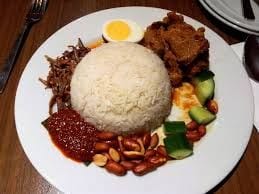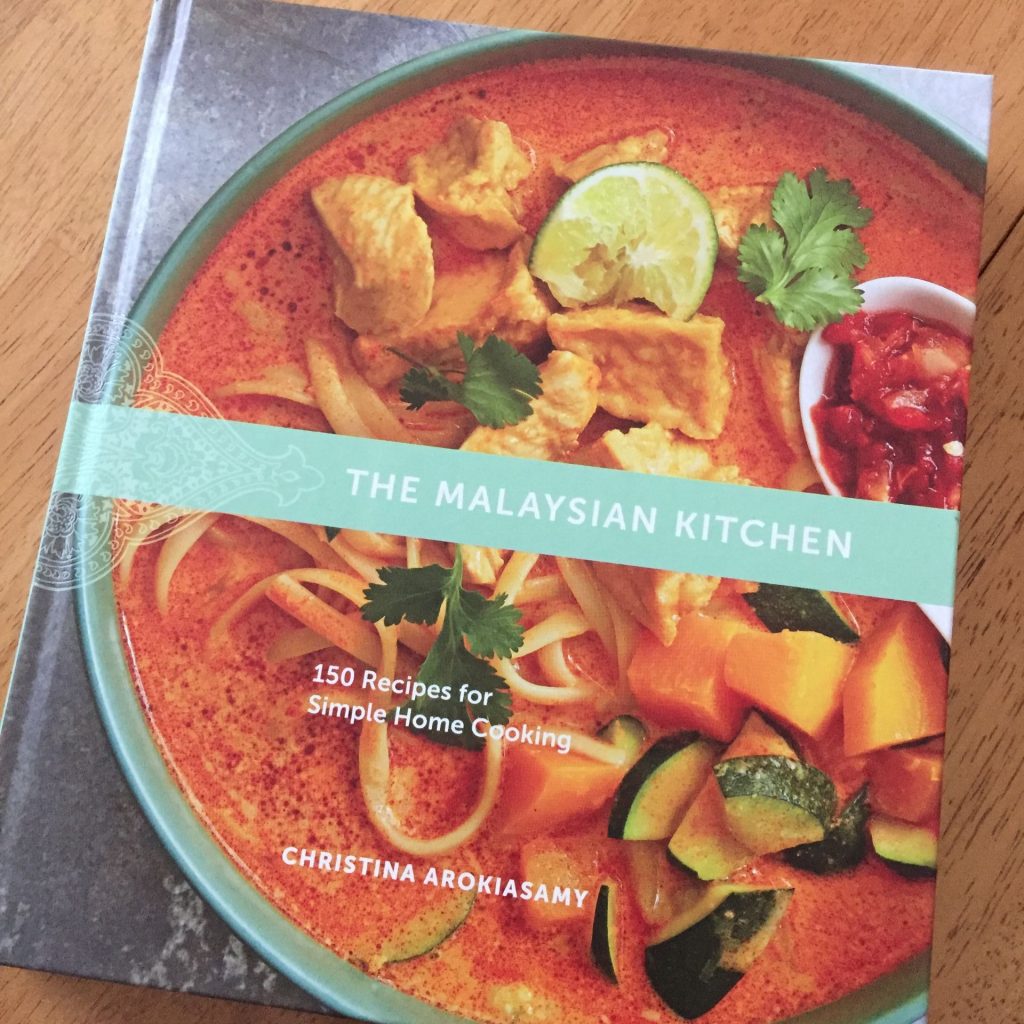Personal Note: Phew if this trip is good for anything, it is good at breaking habits! Infrequent access to WiFi, people think coffee is weird and prefer tea, air conditioning is not found everywhere.. lots of changes we are constantly molding and adapting to, and I will say — this group is pretty dang good at it! I find it amusing, that my blog post on our first day I lamented about the lack of coffee/caffeine in my body and the struggles I was experiencing. For my second post, it was the day that we toured a coffee processing company where we got one small sample.. I have broken this addiction so well that I did not even think of buying myself a whole cup until we got on the bus and had already missed my opportunity. Old me would have asked for an IV or at least five drinks to go.
July 20th – Second Day in the FELDA
MyPlate tells us the recommended serving sizes and food that people should be eating to maintain a healthy diet. On the plate, it includes fruit, grains, vegetables, and protein. (Note to Malaysian students, grains is a broad category — it does not only say specifically rice). Vegetables are the largest piece of the plate, but what do we really define as a vegetable? According to google a vegetable is “a plant or part of a plant used as food, such as a cabbage, potato, turnip, or bean”. So — since vegetable is the largest piece of my plate — and vegetable is just defined as part of a plant used as food — we had quite a healthy Saturday!
Snack Company Tour
Enter a Malaysian home and they all have little containers on their coffee tables with a variety of chips. You will not find Doritos or Lays potato chips, but instead, you will find banana chips and tapioca chips to name a few. We were able to tour a food processing plant where they make chips out of tapioca.
Care to guess what part of the plant is used to make the chips?
The process starts with farmers bringing in truckloads of……tapioca tree… roots! Then they are checked for quality, roots that are too hard cannot be used. The quality roots are then peeled with a large peeler (similar to what you would use to peel potatoes or apples in the states) then it goes into a machine that cuts the root into thin slices, those slices fall into a dye to turn the color orange. Tapioca roots are originally white so they are dyed to match their flavoring. After they are dyed they are placed into a large spinner to remove all the excess water.
An enormous deep fryer is a next step (I thought I was avoiding deep fried foods by missing the Wisconsin State Fair this year) where the chips are all fried to their crispy goodness. The chips are removed from the fryer to a large table to cool. The second to last step is putting them in a concrete mixer and adding the flavoring. We added a cheese flavoring. The last step is putting them on a large table to cool and to sample. They were delicious :). And plants cannot grow without roots.. roots are a part of a plant.. so I am one step closer today for fulfilling my vegetable quota.
The chip factory has been making tapioca chips since 1992 and became certified for Halal food in 2005. They look forward to releasing their new flavor – salted egg – later this year.
Coffee Tour (Kopi-O)
While I feel I do not have the knowledge yet to call myself a coffee connoisseur, I would call myself a coffee consumer. Our second tour of the day was at Kopi-O Coffee Processing Facility. We learned about different types of coffee, Liberica, which is coffee from Malaysia and usually used in the black coffee. Arabica, which is a bean from Columbia and what is typically used in Starbucks coffee. Robusta, which is from Indonesia and known for its robust flavor, but it typically not consumed on its own.
I learned that roasting coffee is a science — over roast it and it is bitter, under roast it and it is sour. Their typical roasting time is between 10-15 minutes. At this processing plant, they sell the powder, not the actual beans.
For their “black coffee” they roast it with sugar and margins so it has to be in the powdered form and they use a mixture of all three types of coffee beans that they have at their facility. For the “white coffee” they have, nothing extra is added but they still create it in powdered form. The “white coffee” is the type of coffee we would typically see in the states.
The company has a TV as their logo because when the company originally started it was when TVs were first starting to be in peoples homes and if you had a tv in your home you were really popular. The owner wanted his coffee to be as popular as the new TVs and to be in everyone’s homes, so he added the TV to the logo in hopes it would be as popular. By seeing the constant stream of people in and out of the tasting room during our visit, I would say his hopes became true.
For my sample, I chose the white coffee and tried the black and both were delicious. Of course, I bought some more coffee to enjoy at home.
PS. Coffee beans grow on trees, so I think that should also count towards my vegetable quota.

































